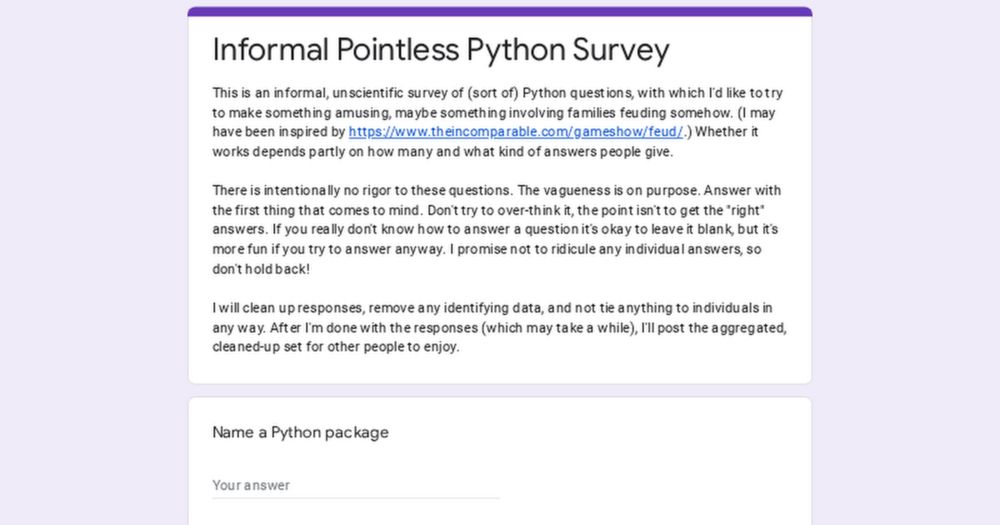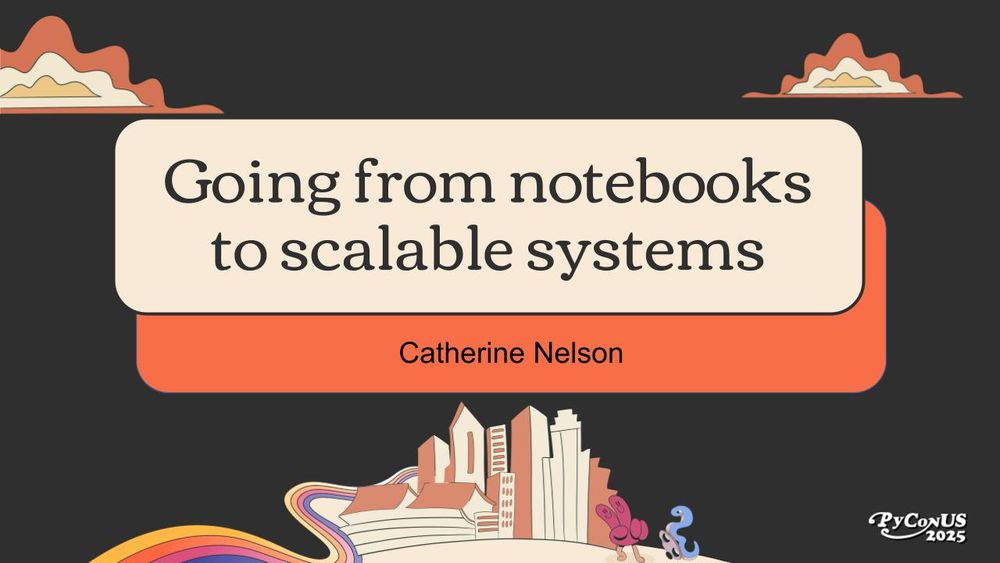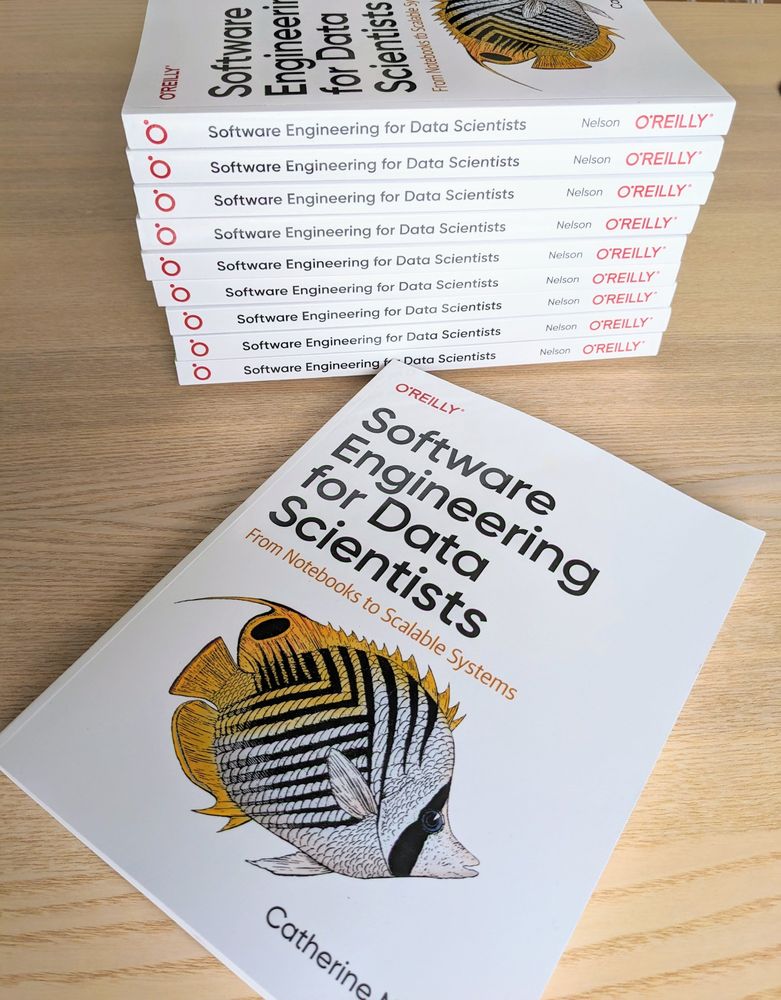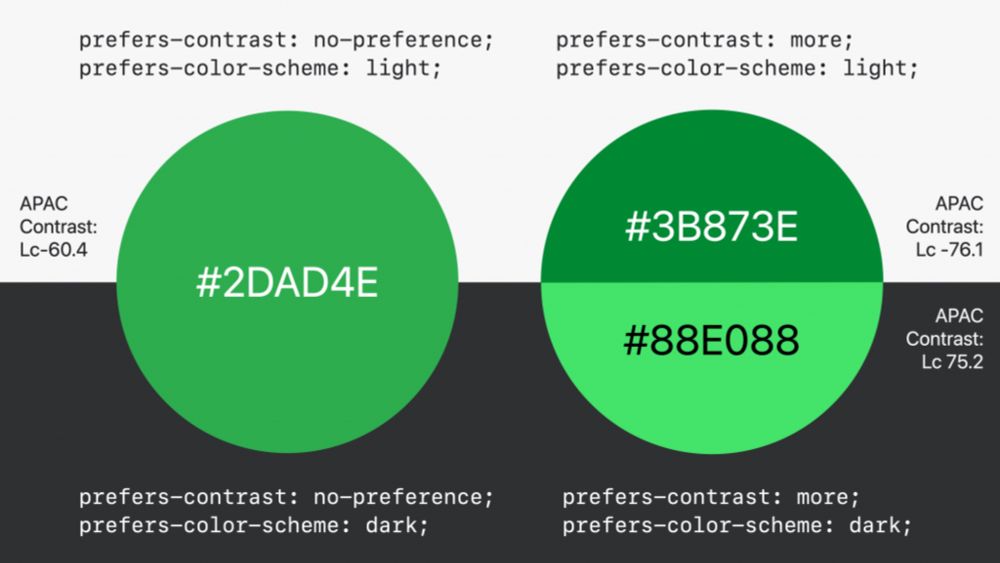I write a weekly Python newsletter, at www.mostlypython.com. I'm also the author of Python Crash Course, from No Starch Press.
#524: 38 things Python developers should learn in 2025
talkpython.fm/episodes/sho...

#524: 38 things Python developers should learn in 2025
talkpython.fm/episodes/sho...
#Python
www.mostlypython.com/time-deltas-...

#Python
www.mostlypython.com/time-deltas-...
For example, the dsd-flyio plugin now supports a `--vm-size` option.
This is what was needed to make plugins much more powerful than simply "give me the smallest possible working deployment".
#Python #Django

While uv *can* replace pip, pyenv, and venvs, you really should be using it differently. If you do, things get easier and more straightforward.
Read more: lerner.co.il/2025/08/28/y...
#Python #Django
django-simple-deploy.readthedocs.io/en/latest/ge...
#Python #Django
django-simple-deploy.readthedocs.io/en/latest/ge...
#Django


#Django
wsvincent.com/ai-for-the-r...
wsvincent.com/ai-for-the-r...
I cleaned up my system recently, removing pyenv in favor of an all-uv approach. I wrote up the process here:
#Python #uv
www.mostlypython.com/updating-pyt...

I cleaned up my system recently, removing pyenv in favor of an all-uv approach. I wrote up the process here:
#Python #uv
www.mostlypython.com/updating-pyt...
Latest feature: you can introduce a bug into a specific block of lines, or even a single line in the target file.
It works for small teaching files, and you can target large files in library code as well.
#Python


Latest feature: you can introduce a bug into a specific block of lines, or even a single line in the target file.
It works for small teaching files, and you can target large files in library code as well.
#Python
It also suggests valid arguments for `-e` if you make a typo.
#Python


It also suggests valid arguments for `-e` if you make a typo.
#Python
If the code isn't directly loaded from a tested source file, or copy-pasted from one, it doesn't go in the document.
"I just need to make a little edit to the code in the post, it'll be fine"
No
If the code isn't directly loaded from a tested source file, or copy-pasted from one, it doesn't go in the document.
"I just need to make a little edit to the code in the post, it'll be fine"
No
py-bugger.readthedocs.io/en/latest/
#Python
py-bugger.readthedocs.io/en/latest/
#Python
www.mostlypython.com/validating-a...
#PyConUS

www.mostlypython.com/validating-a...
#PyConUS
If you wouldn't mind, please fill out this form, and boost for reach:
docs.google.com/forms/d/e/1F...

If you wouldn't mind, please fill out this form, and boost for reach:
docs.google.com/forms/d/e/1F...
(Limited copies available at the booth as well.)
#PyConUS


(Limited copies available at the booth as well.)
#PyConUS
I love panels because you get multiple perspectives in one session.

I love panels because you get multiple perspectives in one session.


And thanks to the awesome folks at @oreilly.bsky.social I have 10 copies of "Software Engineering for Data Scientists" to give out. I'll share details at my talk.


And thanks to the awesome folks at @oreilly.bsky.social I have 10 copies of "Software Engineering for Data Scientists" to give out. I'll share details at my talk.
#PyConUS


#PyConUS
I have a pretty open day tomorrow, so if you’re around and want to say hello please reach out!

I have a pretty open day tomorrow, so if you’re around and want to say hello please reach out!
Now, the `constrast-color()` function in CSS does just that.
webkit.org/blog/16929/c...

Now, the `constrast-color()` function in CSS does just that.
webkit.org/blog/16929/c...
I have an idea for a logo for django-simple-deploy, but that will take a bit longer to do well.
github.com/ehmatthes/py...
#Python

I have an idea for a logo for django-simple-deploy, but that will take a bit longer to do well.
github.com/ehmatthes/py...
#Python
It's been a really fun project to work on! If you're at PyCon and want to contribute or just talk about py-bugger, please come find me!
us.pycon.org/2025/events/...

It's been a really fun project to work on! If you're at PyCon and want to contribute or just talk about py-bugger, please come find me!
us.pycon.org/2025/events/...
us.pycon.org/2025/events/...
#Django

us.pycon.org/2025/events/...
#Django

